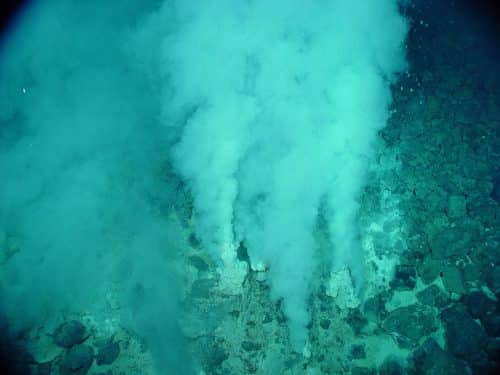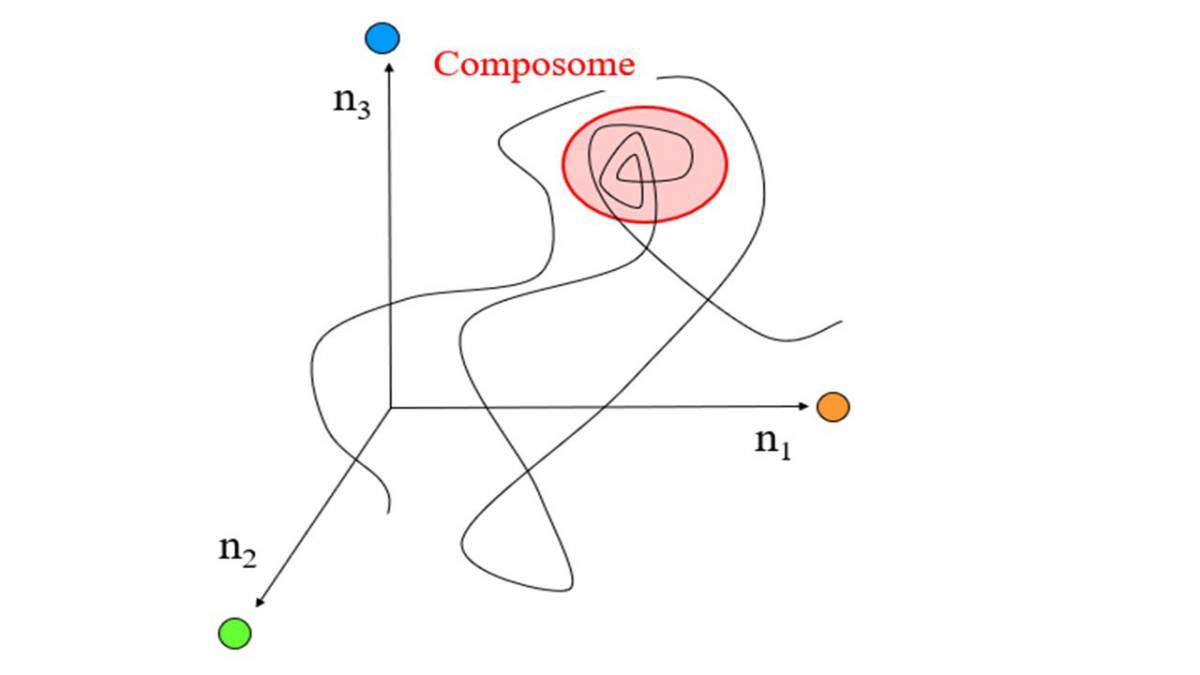Using the computer model they developed, the researchers led by Prof. Doron Lantz from the Weizmann Institute showed that certain fat compositions, called "composomes" can change their compositional information in a kind of mutations, be exposed to natural selection in response to environmental changes, and even reveal capabilities of Darwinian evolution


In 1924, the Russian scientist Alexander Oparin proposed a concept according to which life on Earth developed through a process of gradual chemical changes in organic molecules within the "primitive soup", which apparently existed about four billion years ago on Earth. Ofarin proposed that complex combinations of inanimate molecules, gathered in globules resembling fat droplets, could have led to the formation of life, manifested in the ability of self-replication, natural selection and evolution. These ideas were met with skepticism, which accompanies them to this day.
About 30 years later, when the structure of DNA was deciphered, it was understood that it is an inanimate molecule capable of replicating itself, and it seemed that the problem of the beginning of life was solved without the globules of operin. But later the critics commented that in order for life to be created, catalysts (enzymatic catalysts) are also needed to control the metabolic processes. Another 30 years passed, until it was discovered that RNA, a central link in transferring information from the genetic material to protein, can also be an enzyme ("ribozymes"). This is how the idea of the "RNA world" was born - a concept according to which life began when in the "primordial soup" a ribozyme was suddenly created, which could replicate and also control metabolism.
Despite this discovery, many of the scientists felt that the mystery of the formation of life remained, since replicating ribosome is a complicated molecule and the probability of its spontaneous appearance in the ancient soup is very small. Thus arose the alternative idea of reciprocal catalysis networks, which enable the replication of entire molecular assemblies. In this way, the idea of Oparin returned to center stage: chemical evolution in compositions of simple molecules, whose chances of appearing in soup are reasonable. But there is still a long way to go to show that such networks can appear in soup and create life.
This is where Prof. Doron Lantz from the Department of Molecular Genetics at the Weizmann Institute of Science, and his research partners. In the first step, it was important to find out what type of molecules can cluster together, and effectively create networks of mutual reaction, in the style of the droplets suggested by Ofarin. Prof. Lantz suggested that unique fats (lipids), from which the membranes of living cells are made, are the most suitable materials to create these droplets. These fat globules can grow and divide almost like cells. In this way, Lantz two decades ago founded the concept called "the world of lipids".
In an article that appeared these days in the "Interface" journal of the Royal English Society, Prof. Lantz and his research partners report how they examined many scientific publications, and found that fats can function as catalysts, just like ribozymes. This chemical property is essential for the formation of the reciprocal networks. Next, the researchers show, using the tools of systems biology and computational chemistry, how the tiny fat globules can accumulate and store compositional information, and then divide, while passing the information on to the next generation.
Using the computerized model they developed, the scientists showed that certain fat compositions, called "composomes" can change their compositional information in a kind of mutations, be exposed to natural selection in response to environmental changes, and even reveal capabilities of Darwinian evolution. Prof. Lantz comments that such an information system, which is based on the compositions, and does not depend on a sequence of chemical "letters" as in the genetic material, is reminiscent of the world of epigenetics where certain traits are passed from generation to generation without relying on the DNA sequence. In doing so, the scientists strengthened their hypothesis that life could appear before the genetic material was created. In their article they even outline a chemical pathway that may eventually lead to the formation of the genetic material within the fat droplet model.
The concept of the "lipid world" of Lanzet and his group depends, among other things, on the question of whether there were enough fat-like molecules ("water-hating") in the ancient broth. Here, too, the scientists report that they conducted a comprehensive literature survey according to which there is a high probability that many and varied molecules of this type existed on the ancient Earth. This conclusion was recently strengthened by a study that showed that in Enceladus, one of the moons of the planet Saturn, there is indeed an underground ocean ("ancient soup") that contains various types of "water-hating" molecules, some of which may form droplets of the type required for the lipid world model . Prof. Lantz says that these findings and calculations based on the model show that the probability of life appearing on other planets is relatively high.
More of the topic in Hayadan:

3 תגובות
I would like the response to be published on the site.
Delusional people are searching and will live their whole lives in one big illusion trying to understand how life was created.
They are awarded the titles of doctors and doctors and professors, children who are 6 years old and even less smart know the answer they have been looking for years.
But they are the professors who pretend to be great
From the one who created them and revives them every second, and within a minute can also make them disappear. Hope they get to see you on that day God will be one and his name will be one.
So simple that my forefathers grasped the Creator,
They will only study how the eye is built and they will sit down to rest.
What to do, it's a long evening in our midst.
In the most of your strength your fathers will deny you - about them it was said.
They try to say that my strength and strength of hand made me this brave. The wires in their brain are placed like this by chance, spontaneously... It's interesting that they sleep and in 3 minutes of sleep, they pass and dream for hours, days and months, their soul wanders in higher worlds, I suggest they try and get there
Answers to questions, maybe they will gain some kind of enlightenment.
If proven true, this is a discovery worthy of a Nobel Prize! The formation of life is one of those uncertain points that are difficult to investigate properly (we don't have millions of years to conduct experiments). If there is indeed a significant discovery here, then it is undoubtedly a discovery worthy of a Nobel Prize and nothing less!!
More than 20 years ago, I heard, at the Astronomical Society conference, a lecture on astrobiology.
In the lecture, a similar idea was described, of spherical hydrocarbon molecules, which, according to theory and according to laboratory experiments, were capable of self-replication and culture.
A spectrum of molecules from nothing has been observed in space, in carbon-saturated clouds, which are the result of supernova explosions.